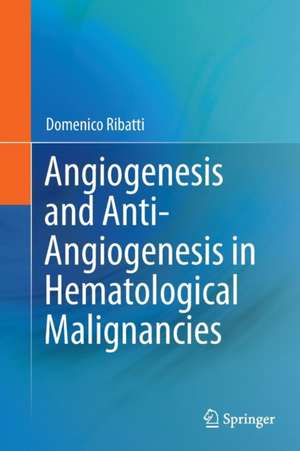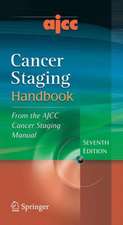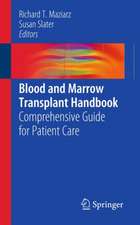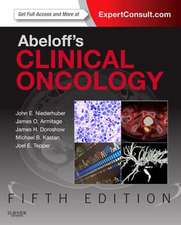Angiogenesis and Anti-Angiogenesis in Hematological Malignancies
Autor Domenico Ribattien Limba Engleză Paperback – 17 sep 2016
| Toate formatele și edițiile | Preț | Express |
|---|---|---|
| Paperback (1) | 706.60 lei 43-57 zile | |
| SPRINGER NETHERLANDS – 17 sep 2016 | 706.60 lei 43-57 zile | |
| Hardback (1) | 715.35 lei 43-57 zile | |
| SPRINGER NETHERLANDS – 20 ian 2014 | 715.35 lei 43-57 zile |
Preț: 706.60 lei
Preț vechi: 743.79 lei
-5% Nou
Puncte Express: 1060
Preț estimativ în valută:
135.25€ • 146.96$ • 113.68£
135.25€ • 146.96$ • 113.68£
Carte tipărită la comandă
Livrare economică 21 aprilie-05 mai
Preluare comenzi: 021 569.72.76
Specificații
ISBN-13: 9789402403053
ISBN-10: 9402403051
Pagini: 125
Ilustrații: XI, 114 p. 44 illus., 30 illus. in color.
Dimensiuni: 155 x 235 x 7 mm
Greutate: 0.19 kg
Ediția:Softcover reprint of the original 1st ed. 2014
Editura: SPRINGER NETHERLANDS
Colecția Springer
Locul publicării:Dordrecht, Netherlands
ISBN-10: 9402403051
Pagini: 125
Ilustrații: XI, 114 p. 44 illus., 30 illus. in color.
Dimensiuni: 155 x 235 x 7 mm
Greutate: 0.19 kg
Ediția:Softcover reprint of the original 1st ed. 2014
Editura: SPRINGER NETHERLANDS
Colecția Springer
Locul publicării:Dordrecht, Netherlands
Cuprins
Preface.- Introduction.- Angiogenesis in multiple myeloma.- Angiogenesis in lymphomas.- Angiogenesis in leukemia.- Antiangiogenesis.- Concluding remarks.- References.
Recenzii
From the reviews:
“This book will appeal mainly to researchers in the field of angiogenesis/antiangiogenesis, and students. … This is a comprehensive book on an important area of cancer research that is often overshadowed by literature on solid tumors. It will be most helpful for researchers looking for information on the subject, but it also enlightens practitioners on the mechanisms of action of some common treatments for hematological malignancies.” (Leslie Popplewell, Doody’s Book Reviews, June, 2014)
“This book will appeal mainly to researchers in the field of angiogenesis/antiangiogenesis, and students. … This is a comprehensive book on an important area of cancer research that is often overshadowed by literature on solid tumors. It will be most helpful for researchers looking for information on the subject, but it also enlightens practitioners on the mechanisms of action of some common treatments for hematological malignancies.” (Leslie Popplewell, Doody’s Book Reviews, June, 2014)
Textul de pe ultima copertă
It has been generally accepted that angiogenesis is involved in the pathogenesis of hematological malignancies, like acute and chronic leukemia, lymphoma, myelodysplastic syndromes, myeloproliferative neoplasms and multiple myeloma. The extent of angiogenesis in the bone marrow has been correlated with disease burden, prognosis and treatment outcome. Reciprocal positive and negative interactions between tumor cells and bone marrow stromal cells, namely hematopoietic stem cells, fibroblasts, osteoblasts/osteoclasts, endothelial cells, endothelial progenitor cells, T cells, macrophages and mast cells, mediated by an array of cytokines, receptors and adhesion molecules, modulate the angiogenic response in hematological tumors. More recently, it has been emphasized the pro-angiogenic role of the so called “vascular niche”, indicating a site rich in blood vessels where endothelial cells and mural cells such as pericytes and smooth muscle cells create a microenvironment that affects the behavior of several stem and progenitor cells, in hematological malignancies.
Caracteristici
Describes the critical role Angiogenesis plays in tumor progression and metastasis Information on Anti-angiogenesis, one of most promising approaches to the treatment of cancer and metastasis Deals with several anti-angiogenic molecules currently used alone or in combination in the treatment of haematological malignancies Includes supplementary material: sn.pub/extras










